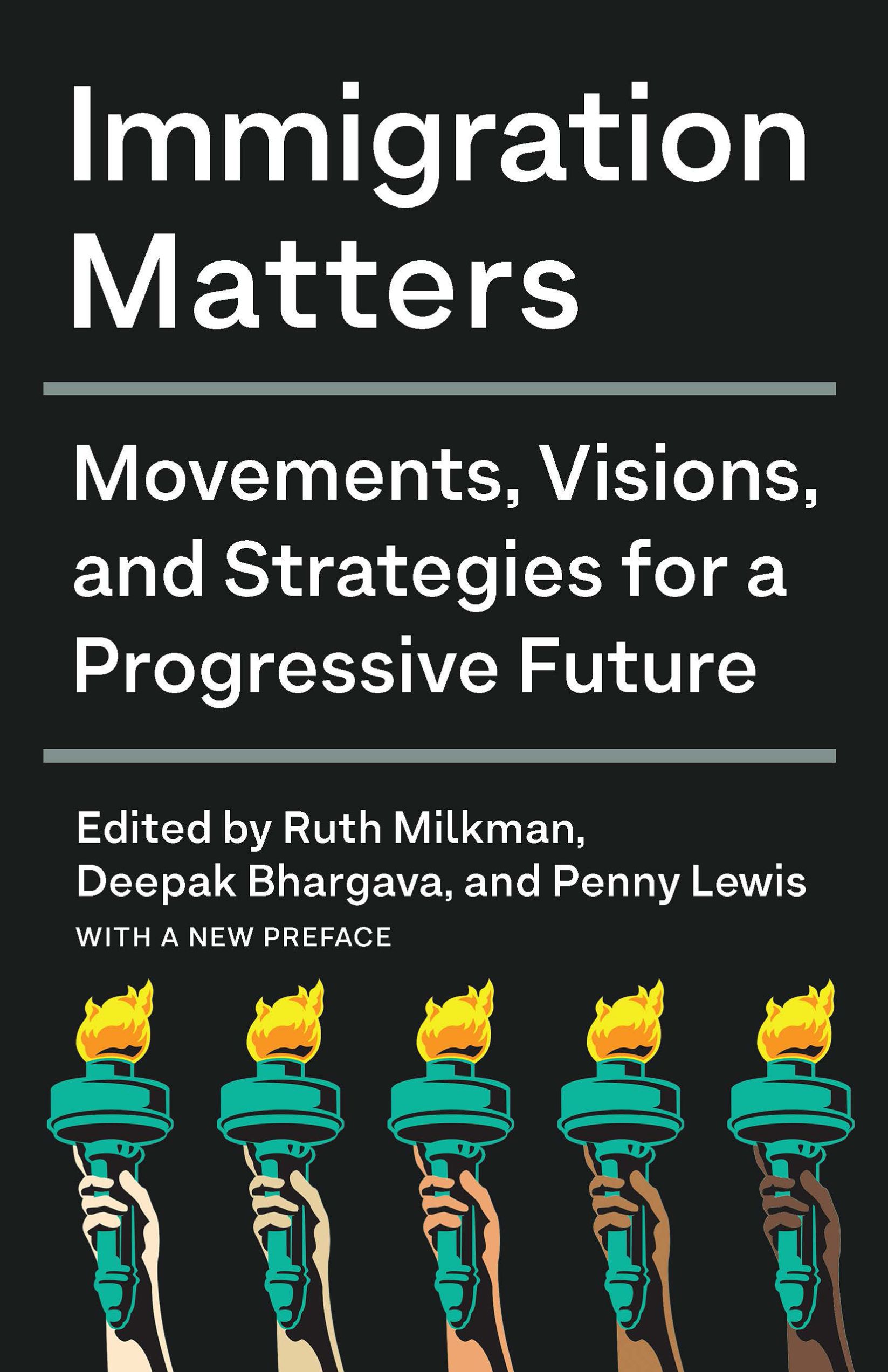Book Review: "Immigration Matters: Movements, Visions, and Strategies for a Progressive Future"

by R. Milkman,
D. Bhargava, and
P. Lewis. (Eds.). 2021. NY, NY: The New Press.
Reviewed by
Richard C. Davila
In naming how immigration came to be one of the “most hotly debated” political issues of the new millennium, Ruth Milkman, Deepak Bhargava, and Penny Lewis, editors of Immigration Matters, do not mince words: “Right-wing demagogues have deployed it as the leading wedge issue to rally their base, put the Left on the defensive, and speak to the cultural and economic anxieties of those in the middle” (p. 1). Working from this premise they argue that a necessary first step toward progressive immigration reform—and the primary goal of the book—is to defang nativist arguments for restrictive immigration policy. To this end, they gather together 16 chapters from scholars and activists who “offer alternative visions that directly counter the ethno-nationalist, anti-immigrant agenda promoted by [Donald] Trump and his counterparts around the world” (p. 24).
The book is divided into four thematic sections: “Historical Perspectives,” “Lessons of Organizing Campaigns,” “Future Immigration Policy,” and “Strategies for Change.” In the first two chapters of “Historical Perspectives,” Mae N. Ngai and Ruth Milkman challenge oft-repeated restrictionist narratives. Ngai traces the historical antecedents of 21st Century nativism through previous waves of nativist furor to argue that such waves often emerge alongside periods of economic expansion, rather than contraction, particularly during periods of sectoral change. She further challenges the idea of nativism as “a ‘human’ reaction to ‘difference’ or ‘others’,” defining it instead as a form of political discourse theorized by “intellectuals and pundits” and weaponized by politicians “for political gain” (p. 41). Milkman similarly counters the “immigrant threat narrative,” which frames declining living standards of non-college-educated U.S.-born workers as a consequence of immigrant labor, arguing instead that neoliberal deregulation and attacks on organized labor “degrade[d] formerly well-paid blue-collar jobs” and created demand for low-paid immigrant labor (p. 57). Both Ngai and Milkman regard nativist discourse as a means to shift blame away from neoliberal economic policies that caused declining living standards and prevent working-class solidarity between immigrant and native-born workers. Much of the work that follows in the book seeks to name and therefore neutralize such divide-and-conquer tactics.
The next section, “Lessons of Organizing Campaigns,” features reflections from a number of organizers on the successes and shortcomings of their campaigns. Cristina Jiménez Moreta, cofounder of United We Dream, identifies two issues that recur throughout the book. First, she notes that many undocumented youth came to reject the frequently deployed narrative that highlighted the achievements of “exceptional immigrants” that reinforced a binary between supposedly “deserving” and “undeserving” immigrants (p. 111). Further, she argues that many immigrant rights advocates and policy makers believe that comprehensive immigration reform, to garner support from conservatives and moderate Democrats, requires a compromise between a pathway to citizenship for undocumented immigrants and increased immigration and border enforcement. Regarding the Obama administration’s failure to pass comprehensive immigration reform, she states, “His administration failed to pass legislative immigration reforms that would provide a pathway to citizenship, while the enforcement regime steadily grew in resources and power. This exposed the false logic that victories for immigrants are possible only if our movement publicly accepts increases in enforcement” (p. 114).
The chapters in “Future Immigration Policy” take up Jiménez Moreta’s challenge to envision immigration policy that does not depend upon increased funding for immigration enforcement agencies. Marielena Hincapié, for instance, proposes an immigration system rebuilt from the ground up based on “the five freedoms”—freedom to stay, freedom to move, freedom to thrive, freedom to work, and freedom to transform. In this system, taxpayer funds would be redirected from the Department of Homeland Security to legalization and naturalization services, and to government agencies concerned with employment rights and workplace safety. While much immigrant rights discourse is concerned with paths to legalization for undocumented immigrants, Amaha Kassa calls attention to policies put in place by the Trump administration to decrease legal immigration and naturalization. He therefore proposes a “future flow” agenda “that advances an expansive notion of citizenship and takes seriously our obligations not only to immigrants currently in the United States but also to those who seek to be Americans and those who will come after us” (p. 187).
Chapters in the book’s final section, “Strategies for Change,” address some of the difficulties of putting in place the kinds of policy suggested in the previous section. Both Cecilia Muñoz and Deepak Bhargava note the difficulty of moving progressive immigration policy through a deeply divided legislature and argue for reform efforts that do not depend on Congressional action, such as agency-level internal policy changes where allowable as well as executive action. The authors in this section also stress the importance of publicly articulating progressive solutions to immigration issues that can, as Muñoz argues, “convince the public that there is a way out of the morass that brings order, fairness, and humanity” and neutralize nativist messaging (p. 262).
Altogether, the book offers an informed, well-reasoned, and optimistic vision for a progressive immigration system and immigrant rights movement. This optimism, though, is perhaps the book’s central flaw. Though published in 2021, the 16 chapters of the book seem to have been written prior to the 2020 presidential election when then-candidate Joe Biden promised to immediately reverse many of Trump’s most damaging immigration actions. Now over a year into his first term, Biden has been unable to follow through on many of those promises, while obstructionist Democratic senators have tanked any attempt to take advantage of their narrow majority. One wonders how the authors of these chapters may now be rethinking the agendas and strategies put forth.
